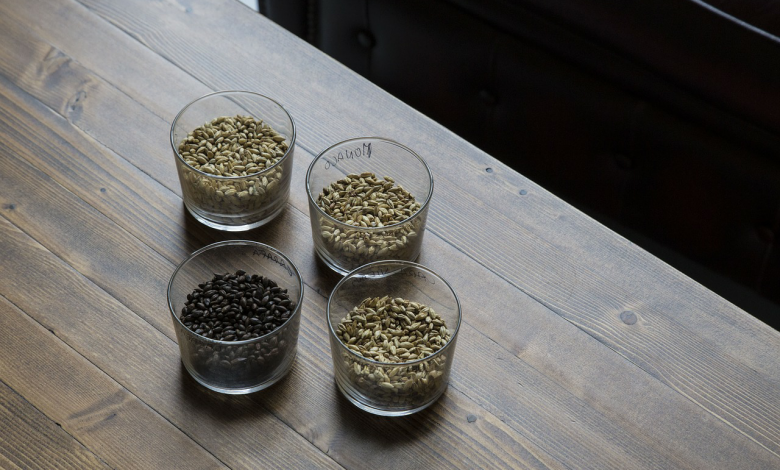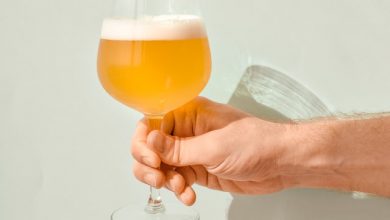Norwegian Kveik Yeast Strains: What’s the Big Deal?

We’re thankful to Lars Marius Garshol for discovering kveik yeast, a beer ingredient with a hint of mystery from Norway. More importantly, his discovery is the reason for the awesomeness of some commercial and homebrewed beers today. The chances are high that without this devoted beer-drinker, every proud member of the beer community would probably have to endure a long wait while fermenting beers before having a taste of what their hard work has produced.
Yeasts are a great deal when it comes to beer making. Therefore, when beer-lovers get ahold of an incredible one such as the kveik yeast, it’s hard not to keep dotting on it. The tropical flavor greets your palate cheerfully while its fruity aroma keeps you calling for more.
Do you still wonder why this Norwegian culture is such a big deal today? We’ve got all the explanations here.
The Norwegian word kveik is an indigenous term, which means yeast. Presently, the word connotes a non-purified form that has several grown strains of S. cerevisiae. It’s been in use for many years in traditional Norwegian farmhouses. After all, it’s a popular ingredient in Western Norway. Its peculiarity lies in its attributes, which are quite different from what’s obtainable in other yeast strains made in Europe.
It’s hard to state categorically when this Norwegian yeast came to be. However, it’s been around for a very long time. There’s evidence of the use of kveik in a Norwegian farmhouse brew dating back to the early 1600s. More so, there are speculations that it’s been in existence even before the said year. One of its laudable attributes is that brewers can harvest it, dry it, and then reuse it multiple times and still enjoy a great brew.
Due to the popularity of the Norwegian yeast amongst various beer communities and households, many types of kveik have evolved with their unique flavors. Thus, the word kveik doesn’t connote a kind of yeast, but an array of forms with identical traits, yet varying tastes.

Why Does Every Brewer Want Kveik Yeast?
Given that kveik is a creation of Norwegian farmhouse brewing, it isn’t surprising that its brewing method is unique to the region. The yeast contains a range of properties that distinguish it from the more modern controlled yeast strains found in many popular breweries today. Unlike more common forms, kveik has more fatty esters. These traits explain why every brewer wants a piece of this single-cell organism. However, there are even more reasons to adore this yeast.
Kveik Thrives in High Temperature
If you want to know part of the big deal about this Norwegian yeast, take a look at its fermenting temperature. It can withstand high heat and ferment at a much higher temperature than others.
Usually, many ales undergo fermentation at 55 to 72 degrees Fahrenheit, while kveik ferments at a relatively higher temperature of 64 to 104 degrees Fahrenheit. Sometimes, its fermentation temperature can even rise to above 100 degrees Fahrenheit. Brewers take advantage of this attribute to keep the fermentation temperature at an extreme. That way, they can acquire the sort of fruit flavors their beer palates crave.
Nonetheless, even at average fermentation temperature, kveik also produces a satisfactory brew flavor.
Fermentation with Kveik Is a Quick Process
There’s hardly a yeast that saves as much brewing time as kveik does. Most yeasts take half a day or an entire day to show any sign of fermentation. Some even take about a week to undergo the same.
When it comes to this process, kveik is in a class of its own, as it ferments between half an hour to three hours and produces an excellent beer within 24 to 48 hours. So if you’re ever in Norway, you can be sure to have a refreshing homemade beer not long after dropping your luggage.
Kveik Has a High Alcohol Tolerance
Kveik isn’t one to lose its flavor profile in a highly alcoholic environment (13 to 16 percent ABV). Instead, it begins to thrive even better. Although for a softer ABV, we advise that you raise the percentage of this yeast nutrient so that fermentation can quickly take place.
Another plus for this brew element is once you finish fermenting, the yeast quickly falls out of suspension.
Drying, Storing, and Re-Using Kveik Is No Myth
It’s common practice for most farmers to brew as much as 150 liters of beer before thinking about brewing again in months to come. However, kveik has helped brewers find a way to topple that practice. You can dry and store this Norwegian yeast for a long duration, even as you sometimes use it in between. From what we know, you can save this jewel of an ingredient for 20 years if properly stored.
However, you’ll want to be mindful of pressure to prevent an explosion from occurring.
Traditional brewers have a near-effortless manner of drying this culture. All they do is soak a yeast ring into a perfect beer and then place it on any hook to dry. These days, you can initiate the drying process with a dehydrator or by gently separating as much liquid as you can from the sediments. Then place a paper towel or newspaper on baking parchment and spread the slurry on it.
Put this slurry into an oven or a cellar and allow some hot atmosphere around it. If you’re using a furnace, remember not to close the door entirely. When you have your yeast removed from the oven, you’ll have a hard layer that’s crushable. You can then save it in a zipper storage bag. Store the crushed slurry in a refrigerator, and it can live for as long as two decades.
A procedure you’d want to undertake after drying your kveik yeast is to check for its viability. You can conduct this test two days after drying. You can always repeat this examination regularly to be sure how much living cells you’ve stored up for future use.
What to Brew with the Yeast
Kveik isn’t picky when it comes to the fermenter it can heat in. Deciding on what to brew with this farmhouse yeast can range from a typical ancient ale to a modern stout, all thanks to its variety of distinctive qualities.
Whether your brewing container is boiling a stout or an ale, kveik yeast will always brandish its unique flavor profile in it. However, to enjoy a better effect of this yeast on your taste buds, you’ll want to go easy on the hop so it doesn’t overshadow the kveik’s flavor profile.

Pitching Kveik Yeast
Little does more for kveik yeast. Thus, if you want a life-changing kveik experience, one thing you must do is to under pitch it. Unlike other popular ones that find this sort of pitching to be risky if they must retain their unique flavor, kveik delivers fresh taste with a teaspoon of slurry in 25 liters of wort. This peculiarity is because of its cells, which are pretty much active.
However, when under-pitching, confirm that there’s enough oxygen in the wort to avoid producing an off-flavor. Oxygen should vary between five to eight parts per million range. Undoubtedly, 10 to 12 parts per million are also suitable for your brew.
It’s also interesting to note that pitching this yeast at the usual pitching rate for other beers doesn’t spell doom for it. Nevertheless, we advise that as brewers, you conduct a test for the different kveik strains and discover which method works best for your preferred pitch style.
Has kveik received commercial success? Yes. It’s gone beyond the yeasts for traditional brewers in Western Norway to modern home brewers and breweries across the globe. Laboratories in many countries, like the US, UK, Canada, Australia, now sell kveik. Many brewers have grown to love and prefer this yeast to others, and it’s evident in beers being brewed and commercialized today. Interestingly, in the United States, kveik has been honored with a beer fest.
Have You Seen These Kveik Strains?
There are certain strains of kveik yeast you should try out in your next brewing session. They include:
Hot-Head Kveik
This Norwegian ale strain linked to the Stranda kveik has flocculation that’s on the average. Attenuation is between 75 to 85 percent, while its temperature is somewhere around 72 to 99 degrees Fahrenheit. What’s more? Hot-head has 11 percent alcohol by volume.
Voss Kveik
There’s another strain of the kveik yeast for any willing beer enthusiast to enjoy. Voss kveik has its origin in Gjernes farmhouse. To make the best of this kveik yeast, we advise that you ferment it warmly. Its flocculation is quite moderate, with an attenuation of 75 to 82 percent. It also has a temperature range similar to that of hot-head kveik (72 to 99 degrees Fahrenheit). Comparatively, its alcohol by volume is higher by one percent at 12 percent.
Hornindal Kveik
Lastly, let’s take Hornindal kveik into quick consideration. This Norwegian yeast has high flocculation with attenuation of 75 to 82 percent. Its temperature range is also the same as the hot-head and Voss kveik. Nonetheless, the two strains can’t compete with the Hornindal kveik alcohol tolerance, which accounts for 16 percent. So when next you want to brew, find out for yourself the big deal in each of these kveik yeast strains. Then, you’ll understand why we enjoy talking about kveik yeast strains.



